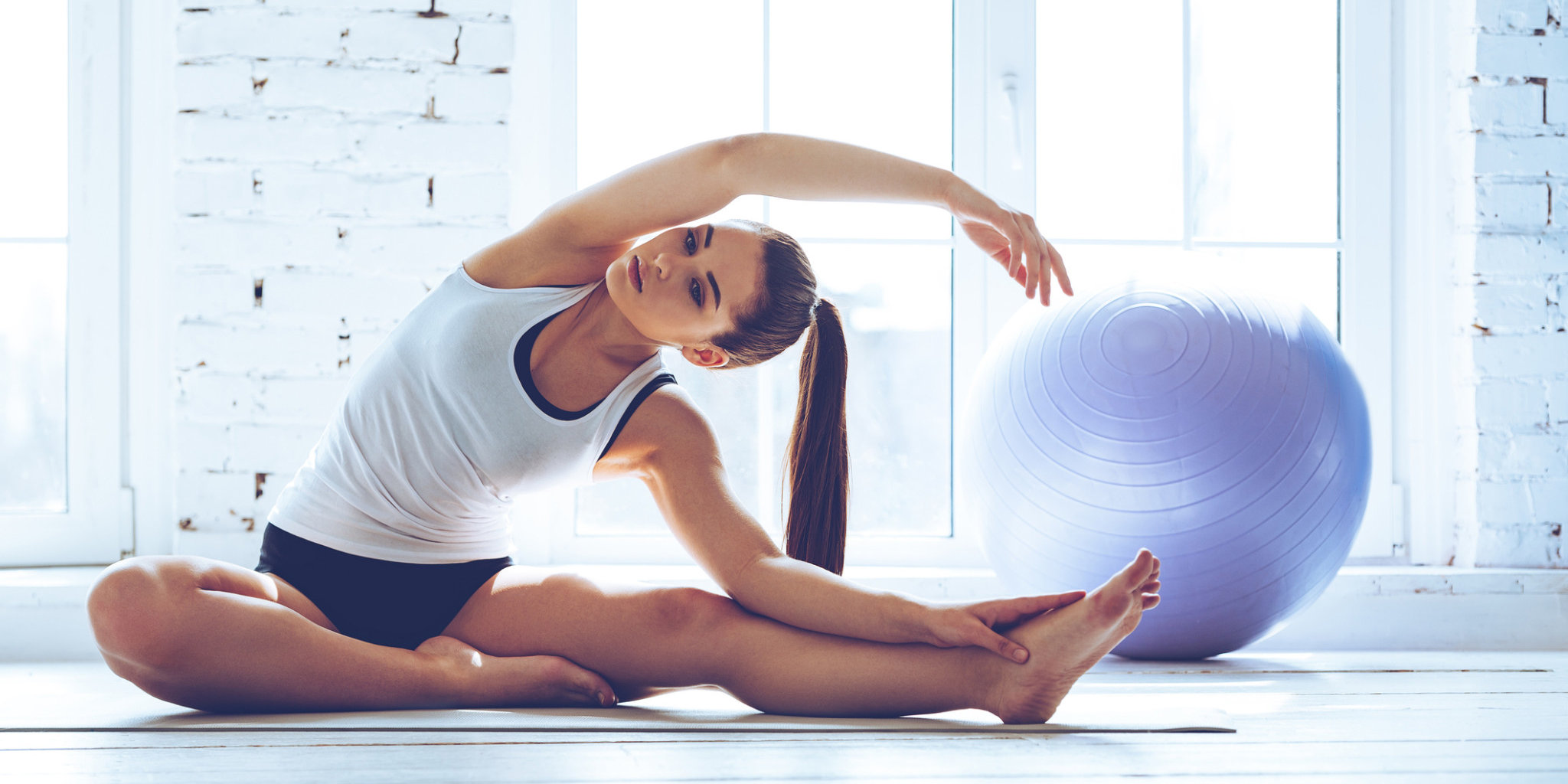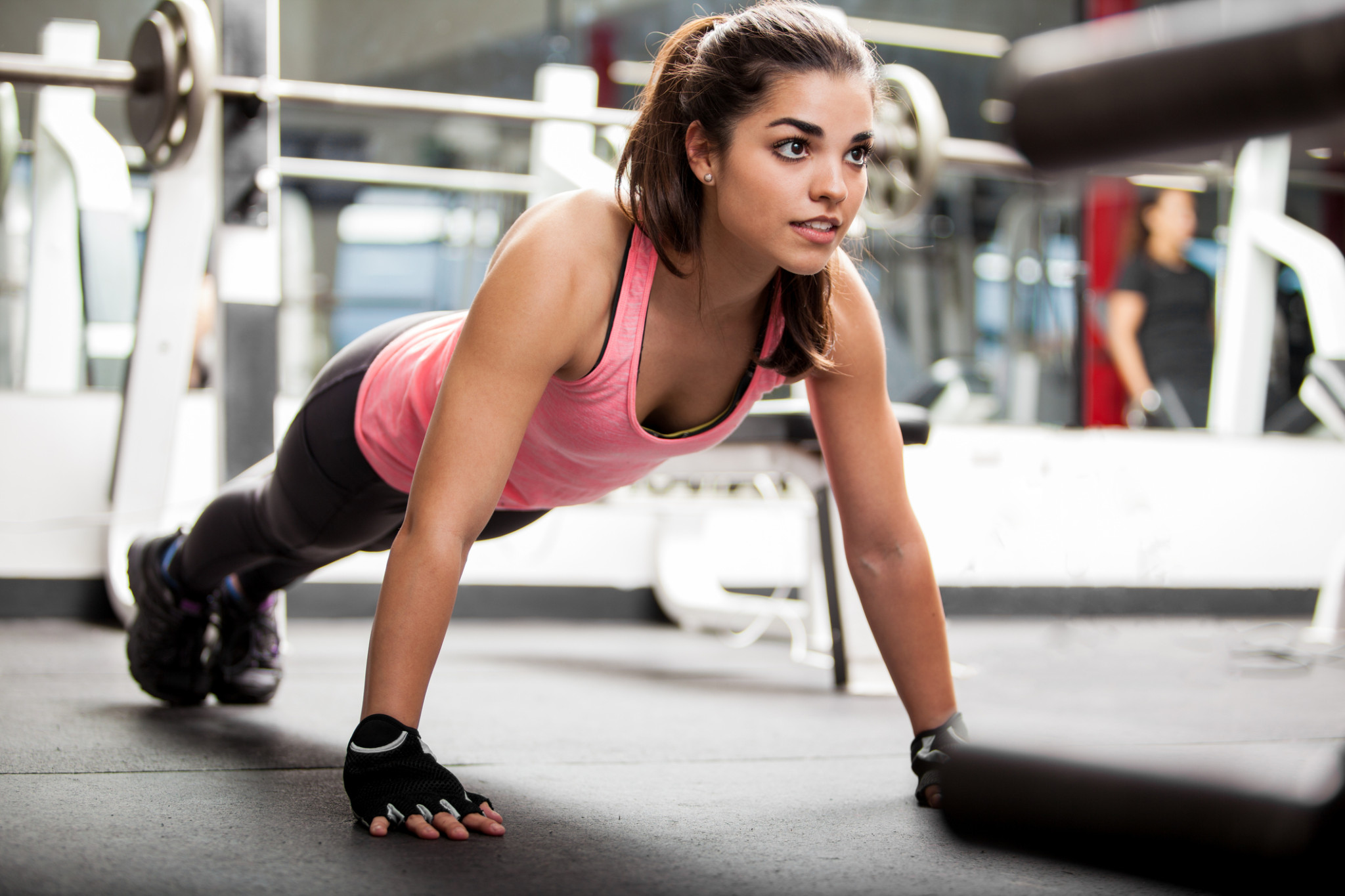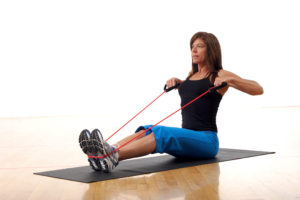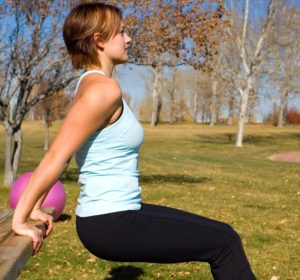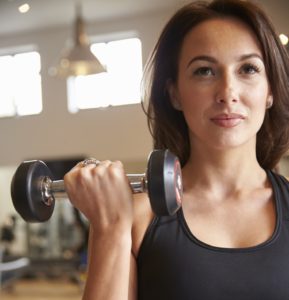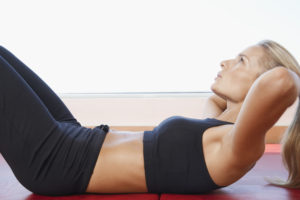Want to burn more calories at rest and even when you’re sleeping? Want to improve your muscle strength and power? How about strengthening your bones, improving your posture and even making those fun activities like playing golf or tennis more enjoyable? That’s what you get when you engage in resistance training, also known as weight training or strength training. It’s a great addition to your fitness program because it helps build muscle, and the more muscle you have the more calories you burn. So, along with aerobic workouts that strengthen your cardiovascular system, burn fat and work some of the large muscles in your lower body, resistance training increases your metabolic rate and challenges all the major muscle groups including those in the chest, arms, back and abdomen. And it doesn’t require a fancy gym membership. You can do this at home. Here’s how:
Warming Up
Before starting anything, it’s a good idea to spend 10-15 minutes warming up. Do some light aerobic and deep breathing exercises. Take a quick walk or jog around the block. If you have stairs, use them. The point is to increase your heart rate and blood flow to your muscles, which in turn will make your muscle tissues more pliable and less prone to injury while exercising.
Push Ups
What you need: Floor, wall, or a chair
Push ups are great for strengthening various muscles in your upper body, including the pectoralis (chest muscles), triceps (backside of upper arm), and deltoids (shoulder). They also help tone the core muscles. The proper way to do a push up is to elevate yourself horizontally with your arms completely extended, back straight, and toes on the floor. Keep your hands slightly more than shoulder-width apart and tighten your abdominal muscles. Inhale as you go down and stop when your elbows are at a 90 degree angle. Exhale as you go back up. If you’re a beginner, try doing this against the wall or with your knees bent. To kick it up a notch, put your feet up on a stable chair. This will add more weight for your body to lift and will help strengthen your arms and core even more.
Seated Rows
What you need: Piece of rubber tubing or an elastic band
Who says you need fancy T-bars and row machines that swivel and glide? Rubber tubing and elastic bands work just as effectively in strengthening your lateral muscles. Sitting on the floor with your legs extended, wrap a piece of rubber tubing or an elastic band behind the soles of your feet. Squeeze your shoulder blades together and pull the tube or band toward you while keeping your back straight. When you finish, your elbows should be behind your back. Return to your starting position.
Triceps Dips
What you need: A sturdy chair
To start, stabilize a chair against a wall so that it doesn’t slide. Place the palms of your hands on the chair and scoot yourself off of the edge. Make sure your feet are planted firmly on the ground at about hip-width apart. Lower your body until your elbows are at a 90 degree angle. Slowly push yourself back up. You could also do this outside at a park bench. Or, if you wish, at your kid’s soccer practice.
Shoulder Raises
What you need: A can of soup
If you don’t have dumbbells, head to the pantry and grab a can of soup or something with weight. With your feet shoulder-width apart and posture straight, raise your arms so that they are parallel to the floor. Hold it there for a couple of seconds and slowly bring them back down. Repeat. This will help get your deltoids nice and firm.
Biceps Curls
What you need: 3-5 lb. weights or filled grocery bag
You’ve probably done some version of this while hauling as many grocery bags from your car to the house as you can. Fill a recyclable shopping bag with some cans and fruits to your desired weight. Tuck your arm and elbow in by your side. Lift the shopping bag toward your shoulder with your palm facing you. Slowly return your hand down to your side and repeat. After a couple repetitions, switch to the other arm. Or, fill two shopping bags and alternate.
Abdominal Crunches
What you need: A yoga mat
If done correctly, crunches can be highly effective in toning up your rectus abdominus (the six-pack area), your obliques, and your traverse abdominus. Lie down with your back flat on the floor and your knees bent. (Avoid anchoring your feet under a couch as this will activate the hip flexors and take the focus away from your abs.) Hold your hands wherever you feel comfortable—be it the back of your head or across your chest. Raise your head and chest toward the ceiling and hold it there for a couple of seconds. Go back down slowly and repeat. Tip: Keep your head and neck in line with the spine and take couple breaths in and out while you’re squeezing your abs at the top. This will help the deeper muscle fibers relax and contract.
A few tips:
It’s always a good idea to check in with your doctor before starting any new exercise regimen, especially if you have a health conditions, like heart disease or diabetes. Remember to work each muscle group at least once. This will help develop balance and tone among all muscle groups.
Try not to exercise the same muscles several days in a row. Give yourself a day or two of rest in between so your muscles have time to recover.
Log how many repetitions you do and approximately how much weight you use each time you work out to help you determine when it’s time to increase the weight or do more or less repetitions
